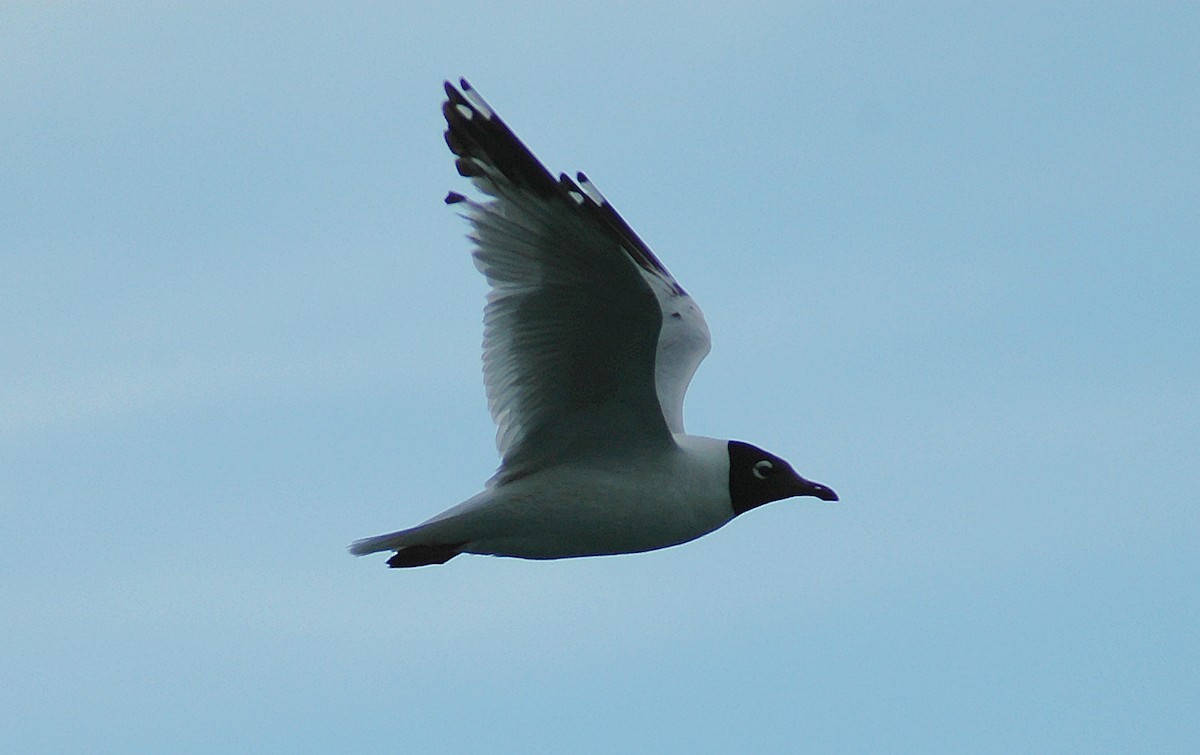Relict Gull
A species of Large black-headed gulls Scientific name : Ichthyaetus relictus Genus : Large black-headed gulls
Relict Gull, A species of Large black-headed gulls
Botanical name: Ichthyaetus relictus
Genus: Large black-headed gulls
Content
Description General Info
 Photo By Nigel Voaden
Photo By Nigel Voaden Description
The gull is 44 to 45 cm long with a stocky, thick body. Non-breeding adults feature uniformly dark-smudged ear-coverts and hind crown, white-tipped wings, prominent, isolated black subterminal markings on outer primaries, and no white leading edge to outer wing. Breeding birds have black hoods (including napes) with grey-brown foreheads, and broad, white, half-moon colouring behind, below, and above their eyes. Their legs are orange and their bills scarlet. The name comes from its status as a relict species. 
Size
44 cm
Nest Placement
Ground
Feeding Habits
Relict Gull primarily consumes insects, beetles, small fish, crustaceans, and occasionally birds, mammals, eggs, or young birds. Adapted to foraging in surf zones and grassy fields, 90% of its diet can comprise chironomid larvae. Wintering relict Gull scour mudflats for food.
Habitat
Relict Gull typically occupies arid and saline montane lake environments for breeding, preferring shores or small islands with pebbly or clay rubble terrain. These sites are often distanced at least 100 meters from the mainland, avoiding areas with agricultural or fishing activity. In winter, relict Gull frequents coastal regions, specifically tidal mudflats.
Dite type
Piscivorous
General Info
Feeding Habits
Bird food type
Distribution Area
The gull breeds in several locations in Mongolia (e.g., Galuut Lake, Khukh Lake, and Chukh Lake), two in Kazakhstan, one in Russia, and one in China (Lake Hongjiannao). Small numbers appear to migrate to South Korea during the nonbreeding period. There is additional evidence that larger numbers may migrate to eastern China as well, but this is not verified. The gulls breed in colonies on islands in saltwater lakes. These sites are fragile. Nesting does not occur when lakes dry up or when water levels are too high. When islands become too small or overgrown with vegetation or so large that they join at the shore, the birds do not nest either. During non-breeding periods, the birds can be found on estuarine mud and sandflats. 
Species Status
The population is estimated to be at 10,000 or less, with numbers dropping. It is classified as "vulnerable" on the IUCN Red List. Its greatest threats are changes of water level in the breeding lakes, predation from other gulls, hailstorms and flooding. Human disturbance has increased their vulnerability to all these factors, resulting in further risks for the adult gulls and increased mortality for chicks and eggs. To combat this, nature reserves in Mongolia, Kazakhstan, and Russia have been established, for example in the Mongol Daguur region. 

 Photo By Nigel Voaden
Photo By Nigel Voaden Scientific Classification
Phylum
Chordates Class
Birds Order
Shorebirds Family
Gulls Genus
Large black-headed gulls Species
Relict Gull